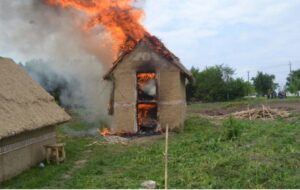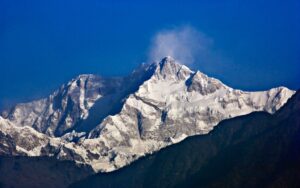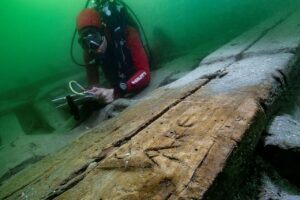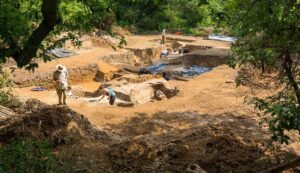The Inca empire was the largest and most complex ancient civilization in the Americas. By the mid-1500s, its territory spanned a colossal two million square kilometres. It encompassed modern-day Peru, parts of Bolivia, Chile, Argentina, Colombia, and Ecuador.
The six million Inca citizens stood out from other pre-Columbian cultures for their unique religious beliefs. Central to their worldview was “huacas”, or sacred objects. These included places or geographical features that they believed possessed supernatural power.

Trail from the Inca Road System. Photo: Matyas Rehak/Shutterstock
Huacas could be anything
Huacas were anything that the Incas believed had supernatural properties. This could be mountains, waterfalls, rivers, large boulders, caves, lakes, and even man-made features like houses, palaces, temples, burial grounds, and mummies. They were shrines, places of pilgrimage, veneration, sacrifice and where one came of age.
These objects and places supposedly carried the souls of ancestors, gods, or other otherworldly entities. Visiting the huacas required sacrifices of humans, animals, precious items, or food.
Additionally, the Incas organized the huacas to reflect the cosmos and astrological interpretations. This allowed the Inca to “read” the land and so interpret the will of the gods. Some scholars believe that Machu Picchu might have been a huaca or at least housed huaca stones or temples. Historians speculate that besides an observatory, Machu Picchu was where priests conducted crucial rituals to connect the sun and earth.

Huaca Pucllana. Photo: McKay Savage
Ceques: the overarching framework
Huacas were organized along invisible lines called “ceques”. These lines accompanied the main Inca road system (44,000km) and connected all the huacas together in a complex ritual framework for many hundreds of kilometres throughout the empire.
The most famous huaca network was the Cusco Ceque System. Here, ceques containing huacas spread out from a central point, in this case, the centre of the sacred city of Cuzco. This is called a ceremonial route. Cuzco was basically the central axis of the empire. The whole city, from its temples to the very ground residents walked on, was sacred.
The Temple of the Sun in Cuzco was the epicentre of holiness and supernatural power. According to early historical accounts, the Cuzco Ceque System comprised over 328 huacas, accessible via 42 pathways. The system was further organized into four main regions, which each contained nine ceques. Historians debate whether or not the ceques are straight or zigzag lines.
Why did the Inca come up with such an intricate religious system? The Inca were conquerors, whose empire was the largest on the continent. The administration of the land, and especially the consolidation of their power, had to be meticulous. The huacas unified different ethnic groups throughout the Andes. The elites maintained the system, ensuring social control. The huacas also acted as boundaries between social groups.
The Spanish were aware of the importance of huacas. They viewed them as symbols of Inca power and the foundation of the empire, so they destroyed most huacas. To them, these objects and places threatened Spain’s own superiority.






